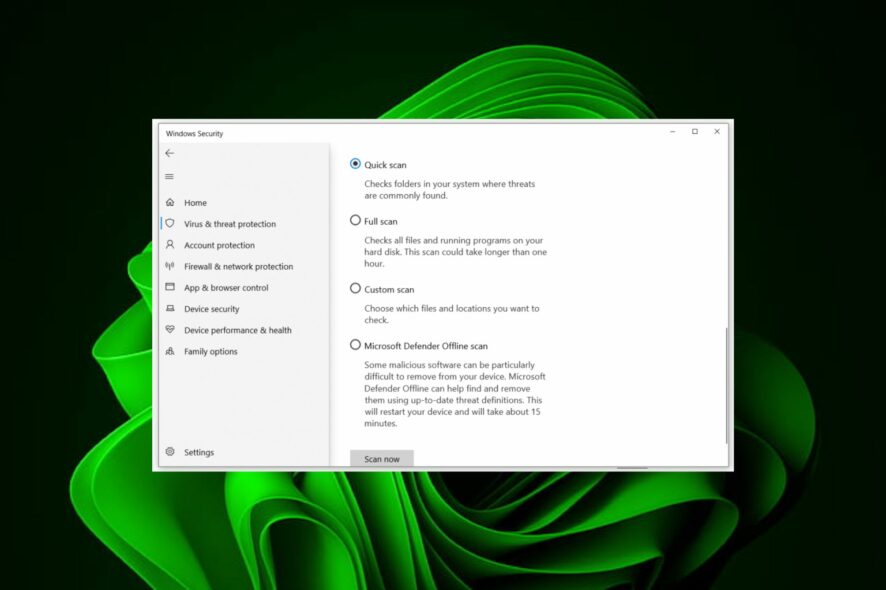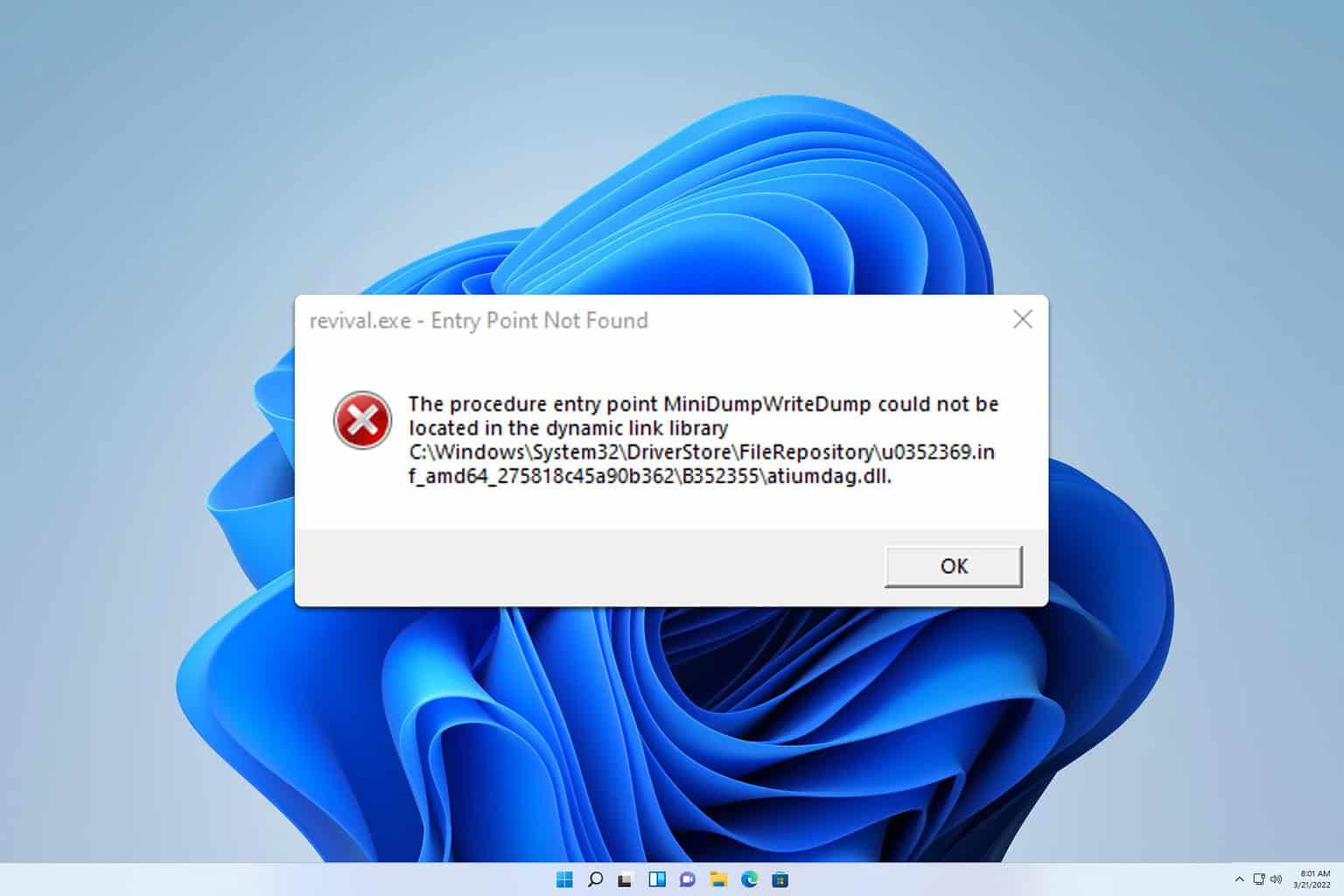Zeus Malware: What is & How to Prevent or Remove it
Disaster may strike at any time but not if you're prepared
8 min. read
Published on
Read our disclosure page to find out how can you help Windows Report sustain the editorial team. Read more
Key notes
- The Zeus malware comes in various forms that mostly take advantage of outdated software and unsecured systems.
- We take a trip down memory lane and uncover the attackers' tactics to help you stay vigilant.
- Stay with us as we unpack what the Zeus malware is all about.

You’ve probably heard of or encountered malware before, but none comes close to Zeus malware. For over a decade, this has been one of the deadliest trojans to infect Windows PCs.
In this article, we will explain in detail what Zeus malware is and how to remove it from your computer.
What is Zeus malware?
Zeus malware is a sophisticated piece of software that allows cybercriminals to steal your personal and financial information. It has been prevalent since 2007, and it has evolved over time to become even more dangerous.
How does Zeus malware work?
1. Infection stage
The Zeus malware works by infecting computers through various methods. It can be introduced into systems through email attachments and websites infected with malicious code.
All these entry methods are done unknowingly, as most are camouflaged as legitimate sites and do not need any action from the user. A simple website visit or click on a phishing email will have already introduced malware into your system.
2. Configuration
This is the stage where the malware changes the settings in your system. It can also be referred to as stealth mode since it creeps in quietly and secretly and ensures your antivirus does not flag it off.
Here, the malware also positions itself to control the infected computer and use it to perform distributed denial-of-service (DDoS) attacks on websites or launch other types of cyberattacks.
When the cycle of attacks is launched, it results in the birth of the botnets. The Zeus botnet consists of tens of thousands of infected computers that have been taken over by hackers.
These compromised devices can now perform the attacks on a larger scale. They send spam messages on behalf of criminals who control them remotely through the malware installed on their machines.
3. Data collection
Once installed on your computer, the Zeus malware will begin scanning all of the files in order to determine what type of data it should collect from the infected computer.
The malware does this by recording what you type into your browser and sending this information back to the attacker. This allows them to see when you log into your bank account and what password you use for each account.
Zeus also records which websites you visit. It then uses this information to target new malware by hijacking the site.
4. Transmission and command execution
With the data collected, the Zeus malware will transmit this information back to its command-and-control (C&C) server.
The C&C server then tells the malware what commands to run on the victim’s computer, such as stealing passwords or banking details.
When this occurs, Zeus can intercept a transaction, and the attackers can transfer funds into their own accounts before they reach their intended destination.
The C&C server can also send data back about any new infections it finds on other computers in its network so that the malware creator can use it for future attacks against those machines too.
What are the different types of Zeus Malware?
- Source code version – Since Zeus is an open-source type of malware, it is made available on the Internet for anyone to download and use. It can be used to create new malware variants or modify existing ones.
- Zeus Trojan (Zbot) – This is an older and well-known type of malware that has been around since 2007. It is a banking trojan similar to the Nukebot trojan that steals information from your computer and transfers it to a remote location where the criminals can use it for their own purposes.
- SpyEye – This version is similar to Zbot in that it also uses keylogging to steal login information from browsers and email programs. In contrast to other Zeus variants, SpyEye doesn’t require its victims to install anything on their computers.
- Gameover Zeus (GOZ) – Also known as P2P Zeus, is one of the most successful pieces of malware ever created because it was hard to track. This is because it uses peer-to-peer networks to communicate with its command-and-control servers.
- Ice IX – Uses two different methods to infect computers: phishing emails or drive-by downloads on websites. It was also multi-purpose as it could launch botnets and still intercept and steal online credentials.
Although there were other types of Zeus malware, like Shylock, and Carberp, they weren’t as predominant as the highlighted ones.
What is the impact of Zeus Malware?
1. Infected computers worldwide
Zeus infected millions of computers worldwide, including banks, government agencies, and many other businesses. According to researchers, as of 2014, up to 1 million devices were infected with Zeus’ most dangerous variant-Gameover Zeus (GOZ).
The United States accounts for a large portion of infected computers, with a whopping 25% of the overall numbers. This is likely due to the popularity of Windows XP, which was being widely used at the peak of Zeus penetration.
When you think of how many computers there are in the world right now compared to back then, it puts these numbers into perspective.
2. Banking credentials stolen
The Zbot was notorious for attacking banking credentials. According to reports, 74,000 FTP credentials were compromised. Top industry names such as Amazon, Oracle, and ABC among others were hard-hit.
What’s more, a lot of people share computers especially at work and businesses were topping the list of compromised devices. This means it was a double hit as individuals accessed both personal and business accounts.
Once a victim’s banking credentials are compromised, the criminal can log in to the victim’s account. Here, they can intercept all transactions and transfer money to their own accounts.
Other than transferring huge sums, they can also change passwords without permission to other related accounts and apply for new credit cards or loans in your name.
3. Millions in funds transferred unlawfully
Zeus has been responsible for stealing funds from both individuals and businesses worldwide. According to court documents filed in the United States, although there’s no exact figure of the amount of money stolen from the compromised accounts, the number is in millions of dollars.
These fraudulent activities have an impact on the economy as individuals and businesses are set a few steps back. Some are still in debt to date as a result of the Zeus malware.
How was the Zeus botnet created?
Zeus botnets are a collection of compromised computers. The attacker uses these infected computers to perform a wide range of tasks on your computer without your knowledge or permission. This is unlike the MEMZ virus that renders your PC inoperable.
1. Drive-by download attack
A drive-by-download attack is a type of attack that occurs when a user visits a website that contains malicious code. It’s infamously known as a drive-by because malicious code is embedded in an otherwise legitimate website.
The user does not have to click on anything in order for an infection to occur. It just happens automatically. The attack can be carried out by exploiting vulnerabilities in web browsers and browser plugins.
Once the Zeus malware has been downloaded, it can run various actions on your computer, such as installing malware, capturing keystrokes and passwords, or changing your browser settings.
2. Outdated software & weak passwords used
This is by far one of the easiest ways to launch an attack. Using weak passwords that anyone can easily figure out and not updating your software poses security risks.
The Microsoft Windows operating system is still the world’s most widely used operating system to date. Because of its widespread numbers, Zeus was able to take advantage of the users who do not take seriously the associated risks with running an end-of-support Windows system.
Hackers leveraged these security vulnerabilities and took control of PCs remotely. Using these techniques, they were able to install malware onto computers without their owners knowing about it
3. Phishing emails & legitimate websites hijacked
Attackers use phishing emails to trick users into downloading malicious software. The emails are usually disguised to come from someone you know or a trusted company. They often include links to websites that look like legitimate sites, such as your bank.
Once the victim clicks on the attachment or link, their computer will be infected with malware from a remote server. The hacker would then use this computer as part of their botnet to send out more phishing emails or steal information from other people’s computers.
How can I prevent or remove a Zeus Trojan?
The Zeus malware is not only a threat to your credit cards and personal identity but also can lead to further damage across connected networks.
Due to its reach and ability to prey on unsuspecting users, the consequences can be severe if an infected machine has access to your router or other devices on your local network.
The best course of action for most PC users is to use common sense and follow the rules regarding internet safety. However, the problem is that so many users ignore basic security principles and maintenance practices.
So, if you’re careless, at least install comprehensive antivirus software on your computer. If you already have antivirus software installed, ensure it’s up-to-date. You can always double-check before opening any email attachments or websites to ensure maximum protection against viruses and Trojans.
For a more proactive approach to getting rid of the Zeus virus and other like malware, check out our detailed article.
Knowing what you do now about the Zeus malware, what steps toward safeguarding your device have/will you take to ensure you’re not a victim? Let us know in the comment section below.











User forum
0 messages